Atlantic Division
Central Division
Southeast Division
Northwest Division
Pacific Division
Southwest Division
Major League Baseball Venues from the Past

For baseball fans that are 50 years old or older (I for one am 61), these folks will remember some of the old stadiums that teams played in that now are a distant memory. Incredibly, since the year 2000, 16 of the 30 Major League Baseball teams have opened new stadiums. That’s more than half! If you include the 1990s, another seven teams debut in a new venue. The Toronto Blue Jays began to play in a new stadium in 1989, the Rogers Centre making it 24 of the entire slate of teams in MLB dumping their old playing grounds for new all since 1989. The other six teams still playing in old stadiums are:
- Kansas City Royals (Kauffman Stadium, opened in 1973)
- Los Angeles Angels (Angel Stadium, 1966)
- Oakland Athletics (Oakland Coliseum, 1966)
- Los Angeles Dodgers (Dodger Stadium, 1962)
- Chicago Cubs (Wrigley Field, 1914)
- Boston Red Sox (Fenway Park, 1912)
The two oldest parks, Wrigley and Fenway are historic. In Boston, it’s the “Green Monster.” That’s because the left-field wall stands 37 feet two inches. At the base of the wall is the scoreboard showing the tallies from around the National and American Leagues impressively updated by hand a process that began in 1934. While older and equally famous stadiums like Yankee Stadium have been destroyed and replaced, Fenway Park remains an icon that can still house a baseball game 108 years and running.
Out in Chicago, we find a stadium just two years younger than Fenway Park that is known for its outfield walls that are covered in the Ivy plant. What else makes Wrigley Field unique are the rooftop seats located outside the stadium originally a free way to see Cubs games but that would eventually give way to being charged for a seat.
One irony regarding the Boston Red Sox and the Chicago Cubs is their shared agony of not playing in a World Series or winning one. For the BoSox, in 1918 they won the World Series. They would not make it back there until 1946 and many blamed this on the “Babe Ruth Curse.” That’s because the “Great Bambino” was a player for Boston who was dealt to the New York Yankees and the rest is history.
Boston would get back to the fall classic in 1967, again in 1975, and one more time in 1986 only to lose them all. So finally in 2004 Boston won another World Series making it 86 years between Major League Baseball championships. As for the Cubs…they suffered worse. A World Series title came in 1908 for the Cubbies and after seven more appearances in baseball’s championship round (1910, 1918, 1929, 1932, 1935, 1938, 1945) Chicago finally got off the snide with a championship victory in 2016 after 108 years of waiting.
Ironically, the Red Sox World Series win in 1918 came over those same Cubs. Like the Red Sox, the Cubs also were supposedly “cursed.” Chicago’s black cloud came in the form of a goat. A bar named “Billy Goat Tavern” owned by William Slanis had a real goat as a mascot in 1945. He brought the animal to the 1945 World Series in game number five but was told he had to leave Wrigley Field because of it. So angered by his removal of himself and his pet, Slanis declared “Them Cubs, they ain't gonna win no more!”
True to his word, the Cubs never reached the World Series again for the remainder of Slanis’ life which ended with his passing in 1970. In those next 24 years from 1945, the Chicago Cubs played .500 ball or better just seven times and finished as high as second only twice and those seasons came in 1969 and 1970. For historians of baseball, they will remember Chicago’s storied collapse of 1969 when they blew a first-place lead in September and watched the New York Mets pass them by and go on to win the World Series themselves.
Getting back to our topic here, the Red Sox and Cubs remain in their respective stadiums, the two oldest stadiums in Major League Baseball. Mentioned prior was Yankee Stadium or better known as “The House that Ruth Built.” That because Babe Ruth called it home and he is perhaps the greatest player ever in the history of baseball. Now comes the part where we look back at some of the baseball stadiums that are long gone, some of which readers may recognize and others that will leave you saying “I’ve never heard of that stadium.”
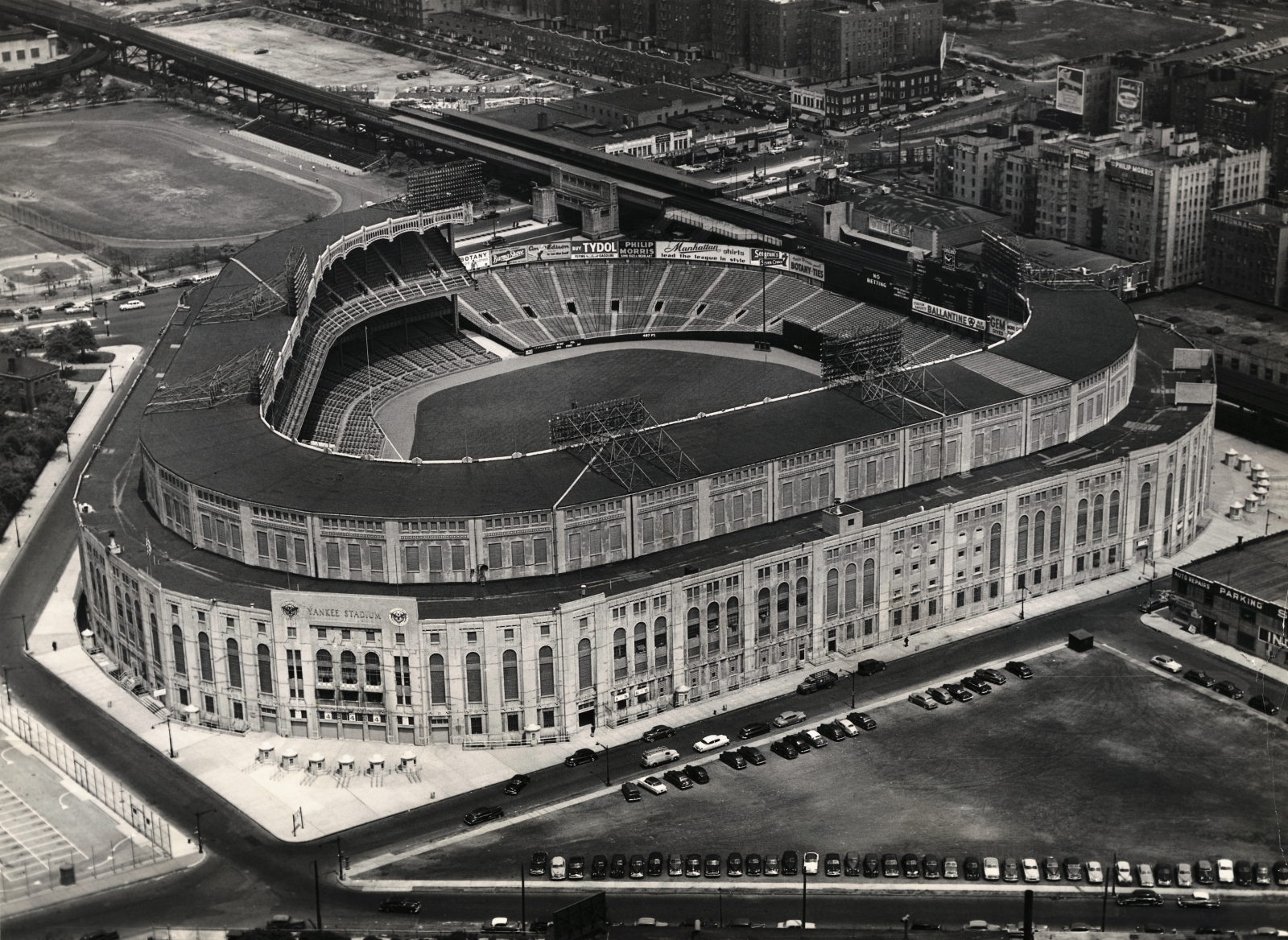
Yankee Stadium
The men in pinstripes once shared a stadium with the crosstown New York Giants playing in the old Polo Fields (we’ll get to that venue ahead) but on April 18, 1923, the Yanks christened their new house, Yankee Stadium. First called “Yankees Park” in 1924 it formally took on the name of the team followed by the word stadium. In the 1974 and ’75 seasons, the stadium underwent renovations as age started to catch up with the facility. The Yankees would play their games at Shea Stadium while construction took place in the old stadium. Yankee Stadium stood for 24 more years until in 2008 the new Yankee Stadium was built and ready for usage as the “House that Ruth Built” was dismantled. A unique aspect of Yankee Stadium old and new is their “Monument Park” which puts on display plaques of great Yankees players of the past.
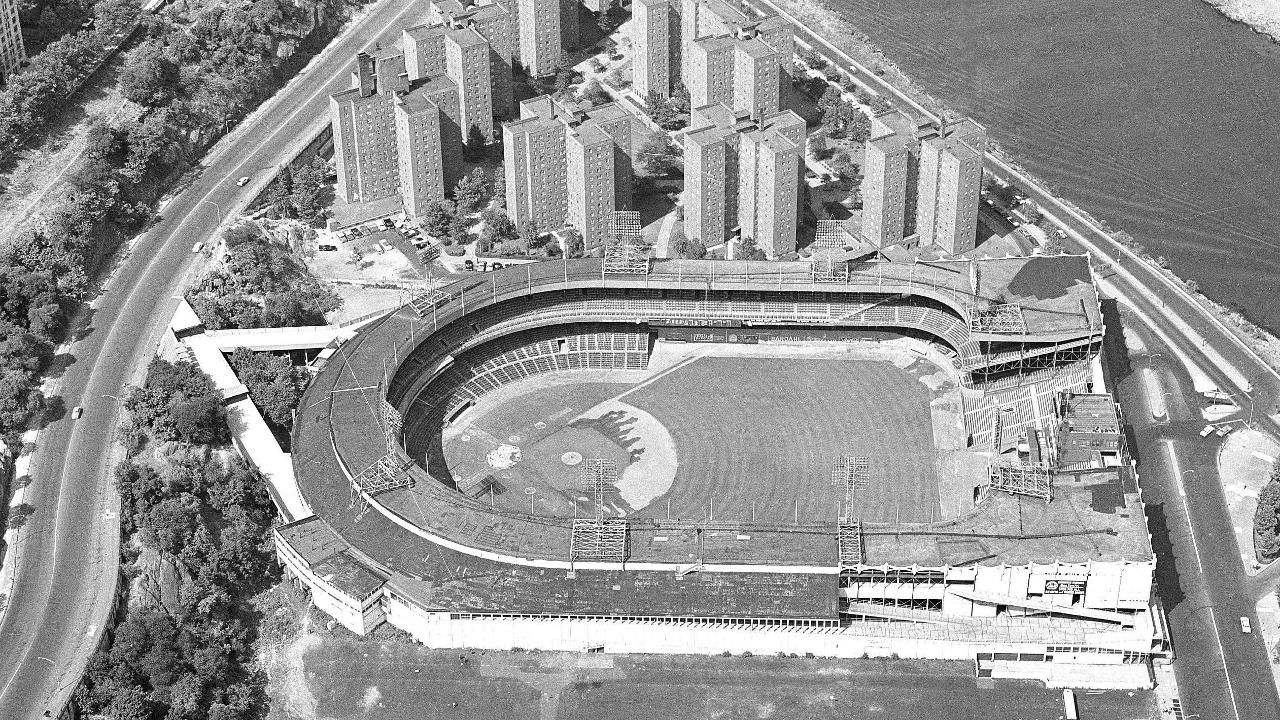
Polo Grounds
While the Polo Grounds stadium is long gone, there are probably many that do not know this facility while keeping its name the words Polo Grounds also applied to four stadiums put to use. The very first Polo Grounds was built for polo teams to play in and the year was opened in 1876. But it opened its doors to college football, baseball, and pro football. Because New York City was expanding its streets in 1889, their blueprint for the new avenues took it directly through the Polo Grounds. Ignoring objections, New York Governor David B. Hill had the stadium dismantled.
The next Polo Grounds found itself in the Manhattan borough of New York in an area that was known as “Coogan’s Bluff.” The New York Giants of the National League called the stadium home but it was referred to more as Manhattan Field. Adjacent to Manhattan Field was another stadium that would become Polo Grounds III as Manhattan Field became a parking lot. Polo Grounds III was originally named Brotherhood Park. After a raging fire on April 14, 1911, that destroyed most of the stadium, renovations took place and the Polo Grounds was considered to have undergone enough changes that it should be called “Polo Grounds IV.”
The most famous incident at the Polo Grounds took place on August 16, 1920, when the Cleveland Indians’ Ray Chapman got plunked in the head from a pitch thrown by Yankees moundsman Carl Mays. The force of the impact sent Chapman to the hospital where he later died becoming the only player in Major League Baseball history to lose their life during an actual baseball game incident. The stadium would remain standing until it was taken down in 1964 with the New York Mets having called it home but were waiting for Shea Stadium to be built.
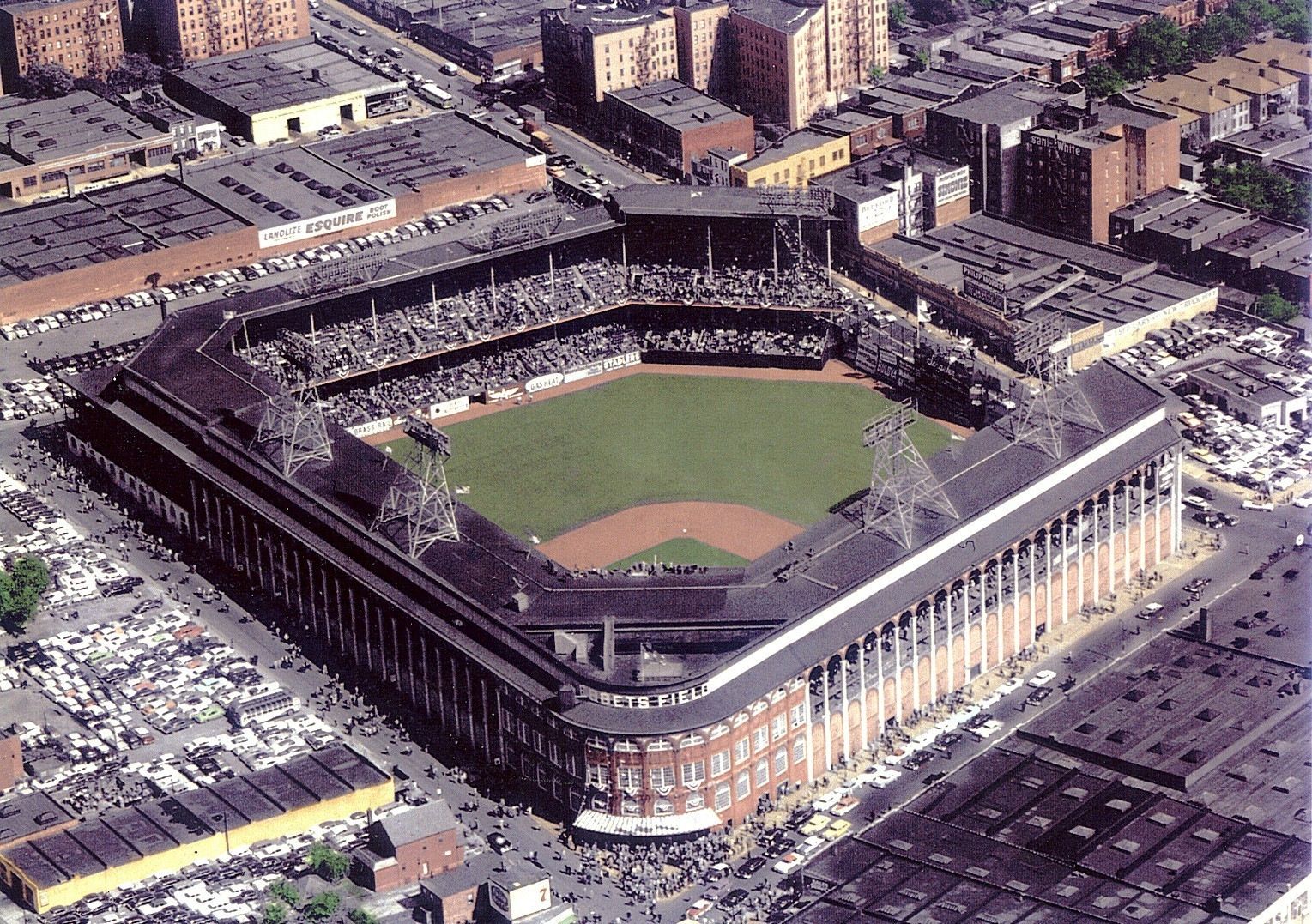
Ebbets Field
Thanks to the Brooklyn Dodgers and their successes in the 1950s Ebbets Field became famous as it showcased the debut of Jackie Robinson who is attributed to breaking the color barrier in Major League Baseball. But not just Ebbets Field but the Dodgers themselves were doomed as calling New York City their home because not just the Dodgers but the New York Giants as well bolted The Big Apple for a west coast location where they remain today in San Francisco and Los Angeles. That left just the Yankees in town until the New York Mets came along in 1962. As for Ebbets Field, it’s walls came crashing down in 1960 gone forevermore.

Shibe Park
When you think of baseball and the city of Philadelphia these days you think “Phillies.” However, at the turn of the 20th century, the Athletics were Philly’s baseball team led by long-time manager and Baseball Hall of Fame member Connie Mack. Shibe Park was the home for the Philadelphia Athletics, an outstanding baseball team that played in this stadium and would see it later to be known as “Connie Mack Stadium.” The venue opened in 1909 and would stand the test of time until it closed with a final game between the Philadelphia Phillies and the Montreal Expos on October 1, 1970. 62 seasons were played at Shibe Park and with it eight World Series played within its confines between the Athletics and Phillies. Shibe Park also hosted some great boxing matches, international soccer games, and even political events as well as concerts, religious events, and circuses. The property and land were eventually sold to the Deliverance Evangelistic Church and their facility remains on the site of Shibe Park to this day.
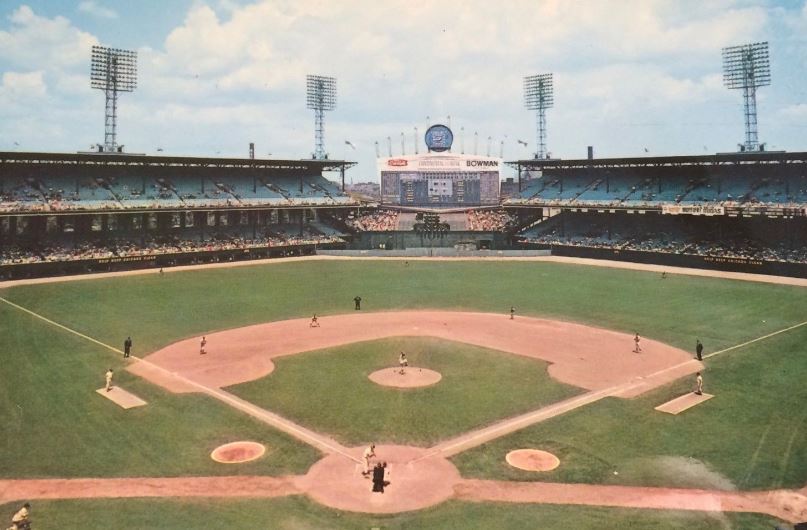
Comiskey Park
Unlike their cross-town counterparts the Cubs, the Chicago White Sox have seen their original stadium come to the ground. “Comiskey Park” was conveniently named after its original owner, Charles Comiskey. The venue would last 80 years from 1910 until the final game was played within its confines in 1990. Comiskey Park was first called “White Sox Park” but would then take on the name of the owner. It hosted soccer and football games as well as American League games in baseball. One bit of famous history belongs to this stadium as the first-ever All-Star Game took place at Comiskey Park in 1933. Some of the biggest names in history played in that first game, for example, Frankie Frisch, Peper Martin, Chuck Klein, Carl Hubbell, Pie Traynor, Paul Waner, Max Carey, Lefty Gomez, Lou Gehrig, Joe Cronin, Babe Ruth, Lefty Grove, Bill Dickey, Jimmie Foxx, Tony Lazzeri, and the managers that day were John McGraw of the Giants in the National League and the legendary Connie Mack representing the Philadelphia A’s for the American League.
Comiskey Park also held one of the biggest and most disastrous events in any sport’s history, “Disco Demolition Night” in 1979. A local radio DJ named Steve Dahl knew there were many who hated disco at that time and so he proposed a demolition night where disco records would be blown up. Expecting a small crowd, it in fact became so well attended that fans were sneaking into the stadium, and once the records got destroyed chaos erupted the field torn to shreds. The event took place in between the games of a doubleheader and the second game was forced to be canceled. Comiskey Park’s demise came in 1991 with the construction of a new stadium and yet just another old classic stadium fell by the wayside.
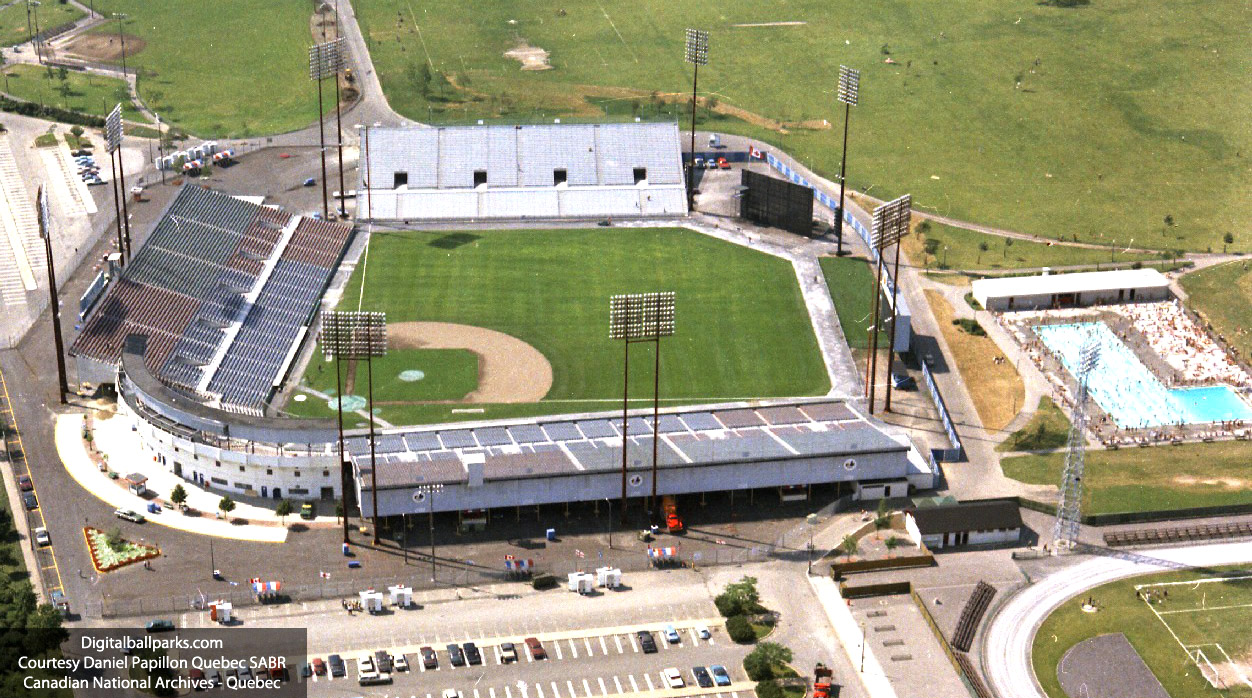
Jarry Park
Before the old Montreal Expos (now the Washington Senators) moved into their Olympic Stadium in Canada, they played in a smallish and odd venue called “Jarry Park.” With a beginning seating capacity of just 3,000 fans, it was expanded to seat 28,456 by 1969. I clearly recall watching games being played at Jarry Park when I was growing up and one memory sticks in my mind that of the outfield “fence.” Yes, a fence and not an outfield wall. Adding insult to injury (sometimes literally) is the fact the fences were not very high so players chasing down fly balls could and did easily fly over the fence in their effort to make a catch. In fact, the fences were just five feet in height.
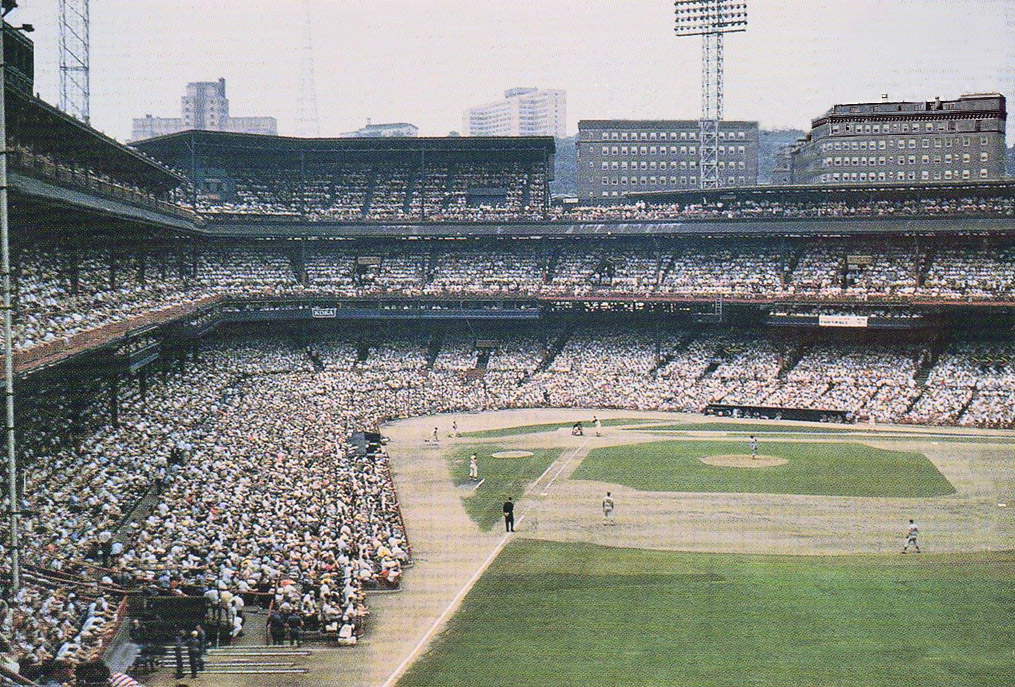
Forbes Field
What better way to wrap up this stadium review then to go back in time with a stadium from my hometown and a facility I had the opportunity to visit just once when I was nine years old, the former home of the Pittsburgh Pirates and Steelers among other teams. The old Forbes Field was a beautiful stadium in the old classic styles of sports facilities and it stood in the Oakland section of Pittsburgh. Almost like Wrigley Field, I can recall standing on the top of my grandmother’s apartment building and being able to just barely see over the outfield wall at Forbes Field. It was not comparable to Chicago where you could actually watch the game, but in Pittsburgh, the Forbes Field outfield was partially visible from that building on North Craig Street.
After playing baseball at Exposition Park, the Pirates opened Forbes Field for play on June 30, 1909. It would remain open until Pittsburgh followed suit of other cities by building a cookie-cutter stadium called “Three Rivers Stadium” in 1970. But some of the greatest Pirates players ever took the field at Forbes Field including the late great Roberto Clemente, perhaps the city of Pittsburgh’s biggest star athlete ever and certainly one of the most beloved. Some fans protested the demolition of the venue in 1970 but to no avail, as it was taken down and the Pirates and Steelers moved into Three Rivers Stadium, a facility that in itself would only last until 2001 when PNC Park and Heinz Field were erected.





